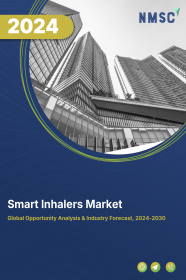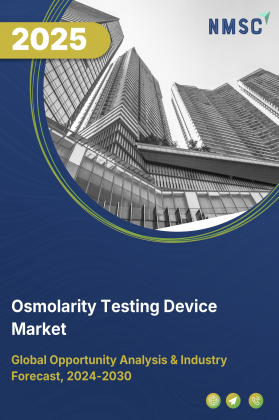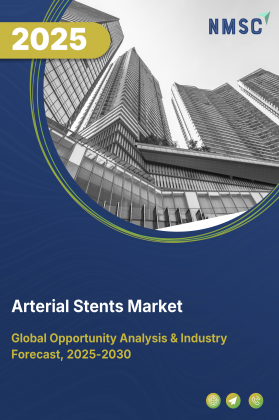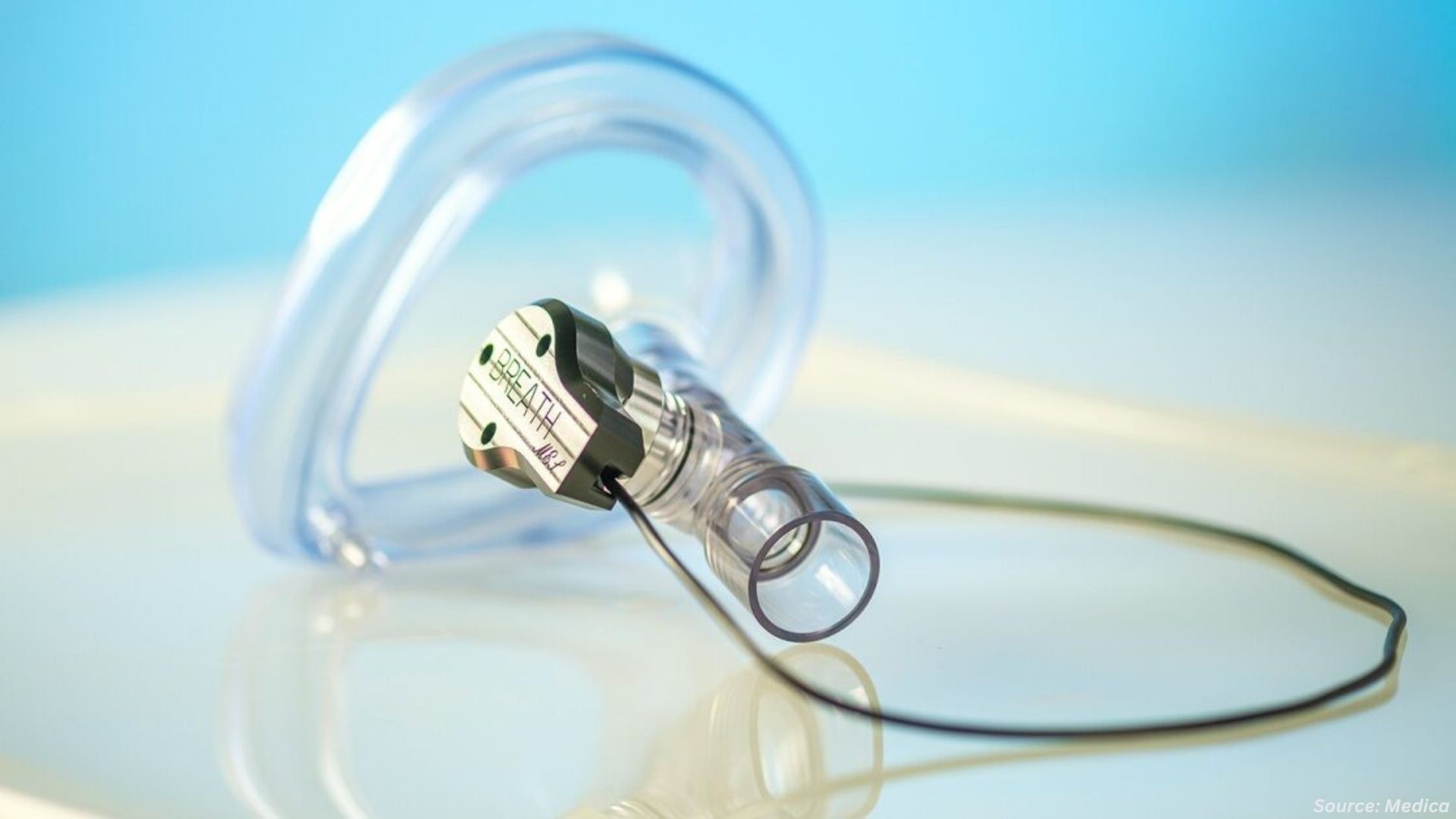
Smart Inhalers Market by Product (Inhalers and Nebulizers), Indication (Asthma, and COPD), and Distribution Channel (Hospital Pharmacies, Retail Pharmacies, and Online Pharmacies): Global Opportunity Analysis and Industry Forecast 2022-2030
Market Definition:
Global Smart Inhalers Market size was valued at USD 113.8 million in 2021 and is predicted to reach USD 2,190.2 million by 2030 with a CAGR of 38.9% from 2022 to 2030.
Smart inhalers are medical devices, used for delivering a variety of medication through inhalation. Smart inhalers can be connected to a smart phone or any other digital device in order to regularly monitor patient’s health. Also, these smart devices are able to raise reminders and alerts for users based on previous pattern of dosage administration.
Moreover, these inhalers can send alerts, informing the patient about polluted areas where there is a high pollen threat.
Market Dynamics and Trends:
The demand for smart inhaler is increasing due to surge in incidents of asthma and other respiratory diseases among people. Also, factors such as improved & better results offered by smart inhalers and their ability to track as well as maintain a record of clinical data is expected to propel the growth of the market during the forecast period.
Moreover, increasing adoption of digital technology in medical devices along with competence of drug delivery devices in treating the patients is expected to drive the market growth.
However, availability of traditional inhalers as a substitute and limited awareness among the population regarding smart inhalers are expected to restrain the growth of market to certain extent. On the other hand, rise in need of smart inhalers for effective management of asthma and COPD is expected to create lucrative growth opportunities for the smart inhaler market players in future.
Market Segmentations and Scope of the Study:
The smart inhaler market size is segmented based on product, indication, distribution channels, and geography. Based on the product, the industry is classified into inhalers and nebulizers. The inhalers segment is further classified into metered dose inhalers (MDIs) and dry powder inhalers (DPIs). Based on the indication, the industry is bifurcated into asthma, and COPD. Based on distribution channels, the market is bifurcated into hospital pharmacies, retail pharmacies, and online pharmacies. The geography breakdown and analysis of each of the aforesaid segments includes regions comprising of North America, Europe, Asia-Pacific, and RoW.
Geographical Analysis:
North America holds the lion share of global smart inhalers market and is expected to continue dominating the market during the forecast period. This is attributed to factors such as favorable reimbursement in the medical sector, higher awareness among people about digital medication, and greater per capita income.
However, Asia Pacific is expected to show a steady rise in the smart inhaler market due to high investments in health care sector. Also, factors such as increasing digitalization in healthcare sector, flexible government policies, and widespread diseases such as Asthma and COPD among population are propelling the demand of smart inhalers in this region.
Competitive Landscape:
The market comprises of various players such as TEVA Pharmaceuticals, RYAH Medtech Inc., 3M Company, Novartis AG, Vectura Group, AstraZeneca, Cohero Health, Glaxo Smith Kline, Adherium and Inspiro Medical.
These manufacturers are actively indulging in R&D initiatives, product & technology innovations, and industrial collaborations to enhance their product and increase their growth and geographical reach.
For instance, in September 2020, Teva Pharmaceutical had launched two digital inhalers, Air Duo Digihaler inhalation powder and Armon Air Digihaler inhalation powder. The AirDuo Digihaler inhalation powder inhalers are useful for those patients who are suffering from asthma in the early stages whereas Armon Air Digihaler inhalation powder inhalers are for long-term treatment of asthma in patients of 12 years and older.
Also, in May 2021, RYAH Medtech Inc. signed an agreement with Delled SAS which is involved in product distribution and software development rights. This agreement is done for the distribution of the RYAH smart inhaler in the market.
Key Benefits:
-
The smart inhalers market report provides the quantitative analysis of the current market and estimations through 2022-2030 that assists in identifying the prevailing market opportunities to capitalize on.
-
The study comprises a deep dive analysis of the smart inhalers market trend including the current and future trends for depicting the prevalent investment pockets in the market.
-
The information related to key drivers, restraints and opportunities and their impact on the smart inhalers market is provided in the report.
-
The competitive analysis of the market players along with their market share in the smart inhalers market.
-
The SWOT analysis and Porters Five Forces model is elaborated in the study.
-
Value chain analysis in the market study provides a clear picture of the stakeholders’ roles.
Key Market Segements:
By Product
-
Inhalers
-
Metered Dose Inhalers (MDIs)
-
Dry Powder Inhalers (DPIs)
-
Nebulizers
By Indication
-
Asthma
-
COPD
By Distribution Channel
-
Hospital Pharmacies
-
Retail Pharmacies
-
Online Pharmacies
By Geography
-
North America
-
U.S.
-
Canada
-
Mexico
-
-
Europe
-
UK
-
Germany
-
France
-
Russia
-
Rest of Europe
-
-
Asia-Pacific
-
China
-
India
-
Japan
-
Australia
-
Rest of Asia-Pacific
-
-
RoW
-
Latin America
-
Middle east
-
Africa
-
Key Players:
-
TEVA Pharmaceuticals
-
RYAH Medtech Inc.
-
3M Company
-
Novartis AG
-
Vectura Group
-
AstraZeneca
-
Cohero Health
-
Glaxo Smith Kline
-
Adherium
-
Inspiro Medical
REPORT SCOPE AND SEGMENTATION:
|
Parameters |
Details |
|
Analysis Period |
2021–2030 |
|
Base Year Considered |
2021 |
|
Forecast Period |
2022–2030 |
|
Market Size Estimation |
Million (USD) |
|
Market Segmentation |
By Product (Inhalers and Nebulizers), Indication (Asthma, and COPD), and Distribution Channel (Hospital Pharmacies, Retail Pharmacies, and Online Pharmacies) |
|
Geographical Segmentation |
North America (U.S., Canada, Mexico) Europe (UK, Germany, France, Russia, Rest of Europe), Asia-Pacific (China, India, Japan, Australia, Rest of Asia-Pacific), Rest of the World (Latin America, Middle east, Africa) |
|
Companies Profiled |
Teva Pharmaceuticals, RYAH Medtech Inc., 3M Company, Novartis AG, Vectura Group, AstraZeneca, Cohero Health, Glaxo Smith Kline, Adherium, and Inspiro Medical. |




















 Speak to Our Analyst
Speak to Our Analyst

























